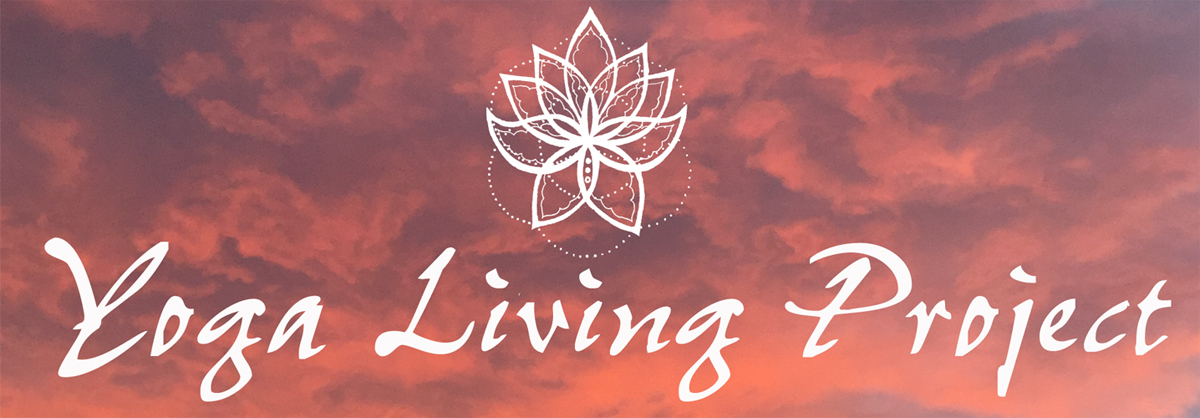We're excited to say that this week's installment of the Yoga Living Project comes from cambio. Yoga Owner & Co-Founder Amber Richman! Amber shares her thoughts on the Subtle Body as well as a pranayama technique. Read below to learn about the subtle body including chakras, vayus, koshas and more. Do you have an experience or topic you'd like to share with our readers? If so, email
What is the Subtle Body Anyway?
A Subtle Body Primer & Purifying Practice
Last month, our studio theme was “Subtle Body”. (Yes, I’m late on my blog!) But what does that mean and why should we care?
In yoga, the subtle body is the body that carries life-force throughout us so that our body can be animated and our minds can reflect consciousness.
A good place to start is with the koshas, or sheaths. The Taittiriya Upanishad explains that we have five koshas which weave together to create our being. Here’s a super quick overview before we delve into the subtle body:
- Annamaya kosha is our physical body
- Pranamaya kosha is our subtle body (hey, there it is!)
- Manomaya kosha is our mind body (thoughts, emotions, subconscious)
- Vijnanamaya kosha is our wisdom body (the buddhi mind where deep knowing of Truth dwell)
- Anandamaya kasha is our joy body (the state beyond all thinking and knowing, where we don’t experience bliss, but know that we *are* bliss)
So, the pranamaya kosha is the subtle, or energy, body. It is what brings life into and what circulates life-force throughout our physical bodies. It also animates our minds and holds our karma, or actions, (along with the manomaya kosha, which contains samskaras, or subconscious patterns—in some systems, the mind body is also considered part of the subtle body) so that we have certain experiences.
Now, what is life-force?
Prana is the energy that we call life-force and the main energy we will be talking about for our purposes. However, it’s interesting to know that there are two others—ojas and tejas. The three are often explained as such: if you have a mug of hot water, ojas is the mug, giving us stability and holding us together, prana is the water running throughout our beings delivering the energy of life, and tejas is the steam, an energy of light radiating from us.
Prana is what the subtle body delivers, but what does the subtle body consist of? Just as the physical body needs organs and systems, so doest the subtle body in order to deliver life-force throughout. I mean, it just makes sense, right?
Prana is carried through channels called nadis. Much like the arteries of our circulatory system carry oxygenated blood throughout our physical bodies, the nadis carry prana through our subtle body—and, in effect, through our physical bodies as well.
You’ve heard of chakras, right? Well, I’m going to switch metaphors, so stay with me. If the nadis are like streets in a city, and the cars are the prana, then where we have major intersections of the nadis, we have the chakras.
The seven major chakras line up from the base of the spine to the crown of the head. The chakras govern how energy is directed into both our bodies as well as our minds. For instance, the root chakra energizes and allows the excretory system to function. It also supports our minds to eliminate unnecessary thoughts and beliefs.
The direction prana flows within the channels is governed by the five winds, or the prana vayus, referred to here as the vayus. Briefly, the vayus direct the traffic (prana) downwards (apana vayu), from the periphery to center (samana vayu), upward and forward (prana vayu), upward and out (udhana vayu), and from center to periphery (vyana vayu). Basically, the vayus make sure that prana circulates throughout our mind-body complex.
Like any system of the physical body, the circulatory system of the subtle body can be healthy or can become unhealthy. When and where it’s unhealthy will show up in the mind and the body. Luckily, through yoga practices, we can help direct the prana.
It’s important to say however, that being able to direct prana absolutely doesn’t mean that if someone is very sick or struggling with mental illness that they are to blame for not better directing their prana. In yoga, samskaras, or latent tendencies that manifest as thoughts, patterns, disease, and such, need to lose their momentum completely before they lose their hold on us. Yoga practices help to slow down their momentum, but we have no idea how strong another person’s samskaras are, what they are working through in life, so it’s not for us to judge, wag our fingers, and tell them to just shut up and do some alternate nostril breathing!
All yogic techniques direct prana, however, asana (poses) and pranayama (breath work) both have a very direct impact. Just think of how you feel in warrior two versus child’s pose. That’s how simply making weird shapes with your body changes the panic flow! (PS, as usual, science is proving what the yogis have known for a long-ass time—just Google “power poses”.) And, if you’ve been practicing long enough to be able to breath consciously in those shapes, you know how breath work takes it to a whole other lever.
Now, how to direct the prana…the best way to figure out how asana and pranayama direct the flow of prana is to use your yoga practice as a grand experiment. Notice how certain poses or breath work make you feel in both your body and mind after you do them and hours later. Yoga is a practical philosophy, which means do the yoga and see how it works in your life. Blind faith is not required. Instead, practice and observe.
If you want to add a pranayama technique to your practice, nadi shuddhi (alternate nostril) is an excellent good-for-any-situation technique to learn. It helps to essentially detox the nadis and it’s said that 10 minutes a day for a few months will have those nadis pretty dang purified. Even if you don’t have 10 minutes a day, try a few rounds and notice what shifts within you.
The directions below are a little more detailed than you might find online. Just as it’s important in our asana practice to think about the details of good alignment, working on the finer points of breath work will bring better results!
Nadi Shuddhi:
You might want to blow your nose first!
- Find a comfortable seat with a long spine.
- Extend the thumb, ring, and pinky of the right hand and bring all other fingers in toward the palm.*
- Close the right nostril with the thumb.
- Inhale through the left as you count evenly to whatever number doesn’t strain you. Four counts is a good place to start. The breath is soft with no constriction in the throat, so it’s nearly silent.
- As you inhale, feel the belly expand, then the ribs, then the chest. This can be tricky. If this three part breath is too challenging, simply feel the belly expand.**
- Close the left nostril with the ring finger, release the right nostril.
- Exhale through the right nostril gently to the same count as you inhaled.
- As you exhale, feel the chest, then the ribs, and finally the belly release. If you are doing belly breathing, simply feel the belly deflate.
- Inhale through the right nostril the same way you did through the left.
- Close the right nostril, release the left and exhale the same way you exhaled previously.
- This is one round. For energetic balance, always do full rounds.
- After your last round, relax the hand to the lap. Breathe gently and notice.
*If you can’t use the right hand for any reason, use the left. If you can’t extend or don’t have those particular fingers, use what you can. If you can’t do this with either hand, no biggie. Visualize it instead. It’s said that visualization is a stronger practice than doing something physically, so you’ll just be ahead of the game! You can also visualize when you have congestion and physical alternate nostril breathing is uncomfortable.
**I would recommend video recording yourself for a few rounds. It’s really important in belly breathing that the chest stays still. Sometimes we think we are belly breathing but discover the chest is moving up and down.
As you work on alternate nostril breathing, you can lengthen the breath count only so long as it doesn’t cause any strain at all. Remember, strain in the body will create strain in the mind. So, let go of goals and meet your breath where it’s at.
If you work on this for a few months consistently and would like the next steps, I’m happy to provide them. Email me at

